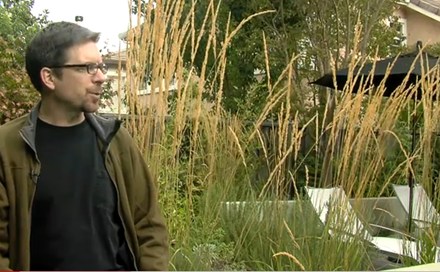Ornamental Grasses Planting Plan
See what types of ornamental grasses to use to add flair and seasonality in your landscaping.
A video transcript featuring Joseph Huettl, Huettl Landscape Architecture
For this particular project, we wanted to provide a screen that was not a solid wall but a permeable visual to screen out the vegetable garden without completely cutting off half of the yard. And in this case, we did that with a combination of a 30-inch-high steel- troweled stucco wall. And then as a backdrop, we have these feathery calamagrostis grasses. It's the Karl Foerster cultivar of calamagrostis, which provides a narrow, green leaf structure, and then above that come these beautiful golden-yellow seed heads, which provide the right height that we wanted to provide a visual screen from the vegetable garden.
Choosing and caring for ornamental grasses
Grasses are actually a fairly low-maintenance plant in the landscape. Some grasses are winter deciduous, so all the homeowner has to do is crop the grass down to 6 inches or 12 inches high, recycle that, and they're done with all their yearly trimming. This particular grass is really nice because it's semi-evergreen. You'll still have a green base, even after the tops are done. These particular tops look great from July into November. After they get rained on quite a bit, they will gray up and then eventually start to collapse. At that time, say, in January, it's a good time for the homeowner or the maintenance person to crop down to about a 2-foot height, and then the grasses quickly come back, and most of the year they're up.
Other grasses we used on this project include Miscanthus Morning Light, which is a great, pretty large-scale 4- to 5-foot-high grass, with a beautiful silvery sheen and a nice seed head that comes up in August to November. Miscanthus in colder climates tend to be deciduous. So you would, again, crop those down to about a 12-inch height, but it's fairly low maintenance, considering that's almost all you have to do for the entire year.
Other grasses we used were a New Zealand Sedge, which is a carex testacea, and it's a low grass with a beautiful orange color that comes out seasonally, providing a great contrast with other plants. Another grass we used throughout in more of a groundcover mode is the blue festuce. The variety we use is Elijah Blue, which is the most blue-intense of the blue fescues.






